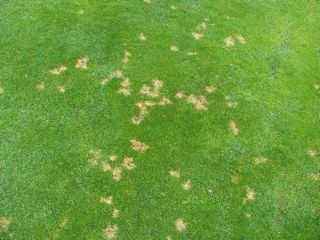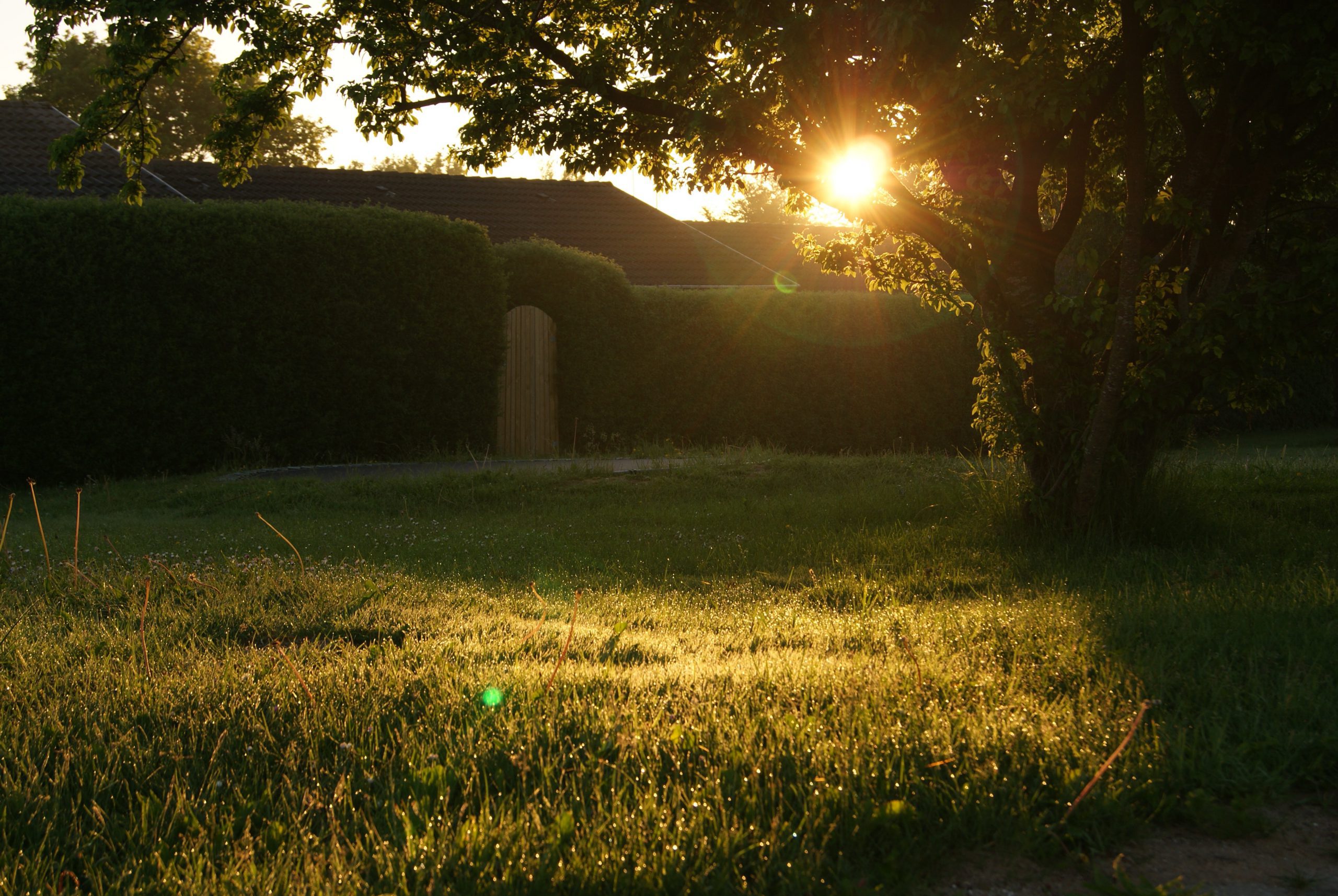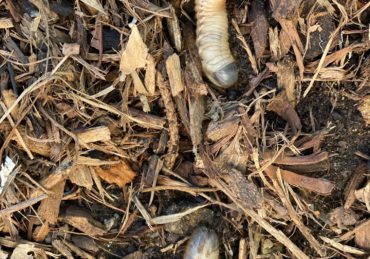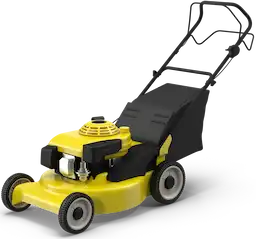Imagine your lawn as a battlefield, with grass diseases and fungi as the invading forces. You’re tasked with identifying the culprits, such as Brown Patch and Dollar Spot, thriving in specific conditions like humidity and poor soil nutrition. Armed with this knowledge, you can develop strategies to defend your turf and maintain its health. Uncovering these issues is just the beginning; the real challenge lies in mastering prevention and control techniques.
Signs Your Lawn Is Under Attack
| Disease Name | Symptoms | Conditions | Treatment |
|---|---|---|---|
| Brown Patch | Brown spots | High humidity, overwatering | Improve airflow, apply fungicide |
| Dollar Spot | Small bleached circles | Dry soil, low nitrogen | Fertilize, treat with fungicide |
| Red Thread | Red/pink threads | Cool, moist weather | Boost nitrogen, reduce shade |
| Rust | Orange dust on blades | Drought + low mowing | Mow regularly, water deeply |
You’ll notice your lawn is under attack when discolored patches and irregular patterns emerge, often indicating fungal activity.
Texture changes in turfgrass, such as increased softness or a spongy feel, can suggest underlying disease affecting the root zone.
Furthermore, pay attention to any off-putting smells or strange fungal growths, as these are critical signals to initiate immediate corrective measures to restore lawn health.
Discolored Patches & Patterns
When you notice discolored patches and patterns on your lawn, it’s crucial to act quickly, as these are often signs of underlying fungal diseases or environmental stressors that can compromise grass health.
Discolored patches, like the yellowing from Pythium Blight or brown spots typical of Necrotic Ring Spot, signal grass diseases thriving in poorly drained, moisture-laden soils.
Circular patterns such as Brown Patch or Summer Patch develop in humid conditions, rapidly expanding if untreated.
Dollar Spot appears as small tan areas with reddish borders, commonly affecting cool-season grasses.
Immediate intervention, including improved drainage and fungicide application, can prevent further lawn deterioration.
Texture Changes in Turfgrass
If your lawn exhibits texture changes, such as thinning or uneven growth, these can be telltale signs of underlying stress or disease.
Fungal lawn diseases often manifest through these symptoms, impacting grass health. Look for:
- Fuzzy Growth: Cobweb-like structures on grass blades may indicate fungal infections like Brown Patch or Powdery Mildew.
- Greasy Appearance: Grass appearing water-soaked suggests Pythium Blight, leading to rapid deterioration.
- Circular Patches: Dead grass encircled by healthy turf could signal Summer Patch.
- Overall Decline: Discoloration and bare spots suggest pathogen or stress-related attacks.
Recognizing these signs aids proactive lawn management.
Smell, Softness, and Strange Growth
A musty or sour smell wafting from your lawn often signals a fungal invasion, such as Pythium Blight or Slime Mold, thriving in damp environments.
When grass feels unusually soft, it might indicate root rot or excessive moisture, symptoms of diseases like Brown Patch.
Strange growth patterns, including discolored patches or green rings, suggest the presence of Fairy Ring or Necrotic Ring Spot, hinting at underlying soil issues.
Manage these problems by improving drainage, reducing watering, and applying fungicides as needed.
Monitor for unusual wilting or drooping, which can signal Gray Leaf Spot, and address promptly to prevent rapid decline.
Common Grass Fungus Types and Symptoms
When tackling common grass fungus types, you’ll encounter challenges like Brown Patch, whose circular lesions expand rapidly in hot, humid conditions, and Dollar Spot, which creates distinctive, straw-colored spots.
Understanding the symptoms and environmental conditions that favor these pathogens, such as Red Thread’s affinity for nitrogen-poor soils, is essential for effective management.
Brown Patch – The Spreading Shadow

Brown Patch, a notorious lawn disease caused by the Rhizoctonia fungi, presents a formidable challenge to maintaining vibrant turf. This fungal disease manifests as rough, circular areas of brown or gray grass, thriving in hot, humid conditions.
To tackle this issue efficiently, consider the following strategies:
- Monitor Vulnerable Grass Types: Keep an eye on Tall Fescue, Perennial Ryegrass, and Creeping Bentgrass, which are especially susceptible.
- Adjust Watering Practices: Water early in the day to allow grass to dry, reducing prolonged moisture.
- Optimize Mowing Techniques: Mow at the correct height to promote healthy growth.
- Inspect for Fungal Growth: Look for cobweb-like symptoms indicating active infection.
Dollar Spot – The Dime-Sized Dilemma
Some might find themselves puzzled by the sudden appearance of small, straw-colored spots blemishing their once-pristine lawn. This is likely Dollar Spot, a notorious grass disease caused by the Sclerotinia homoeocarpa fungus.
It mainly affects cool-season grasses like Kentucky Bluegrass and Perennial Ryegrass, forming reddish-brown-bordered patches, 2 to 6 inches across. Dollar Spot thrives in mild, humid conditions, between 60°F and 90°F, often aggravated by low nitrogen in the soil.
To combat this, guarantee proper fertilization and watering schedules. Regularly inspect your lawn, and sanitize mowing equipment to prevent spread. Early intervention is key to maintaining lawn health.
Red Thread – Nature’s Scarlet Warning
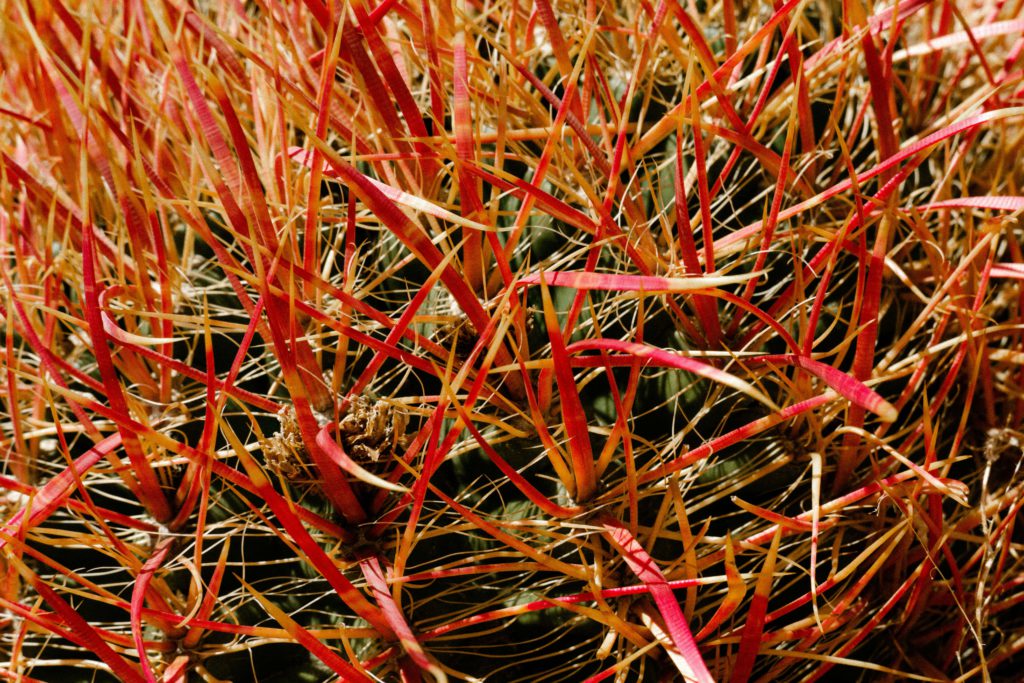
As you navigate the challenges of maintaining an immaculate lawn, another potential adversary emerges: Red Thread, a prevalent grass fungus that signals more than just an aesthetic issue.
This fungus, Laetisaria fuciformis, targets cool-season grasses like perennial ryegrass and tall fescue. You’ll notice pinkish patches on grass blades, with thread-like strands up to 6 inches.
Here’s how to address it:
- Monitor Soil Nutrition: Confirm sufficient nitrogen to discourage Red Thread.
- Enhance Watering: Water early, allowing grass blades to dry.
- Mow Regularly: Maintain ideal height to reduce stress.
- Aerate Soil: Improve drainage and air circulation.
These proactive measures can mitigate Red Thread’s impact.
Fairy Ring – The Fungal Circle of Mystery
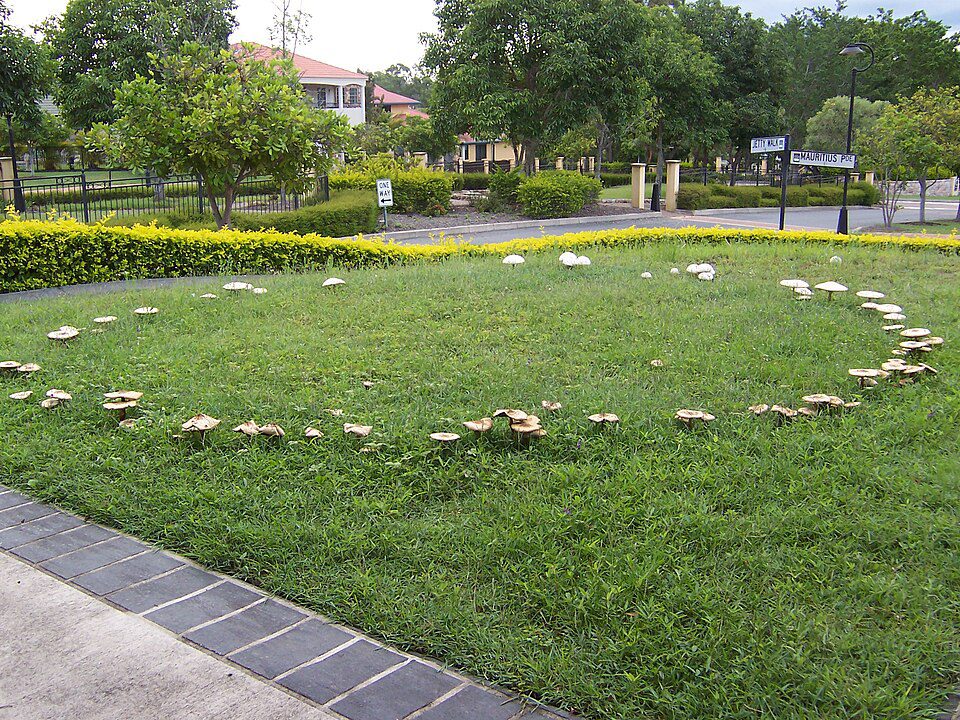
Although maintaining an immaculate lawn is a priority, encountering a Fairy Ring can add a layer of complexity to your lawn care routine. Identified by dark green circular bands, these rings result from the Marasmius oreades fungus thriving in high soil moisture and poor drainage.
This phenomenon can span up to 50 yards, often indicating underlying soil issues. Manage soil moisture by aerating compacted areas and improving drainage to prevent fungal proliferation.
During wet weather, mushrooms signal active growth, and uneven grass may hint at nutrient deficiencies. Address these with balanced fertilization, promoting healthier turfgrass and mitigating Fairy Ring effects.
Rust – When Grass Turns to Dust
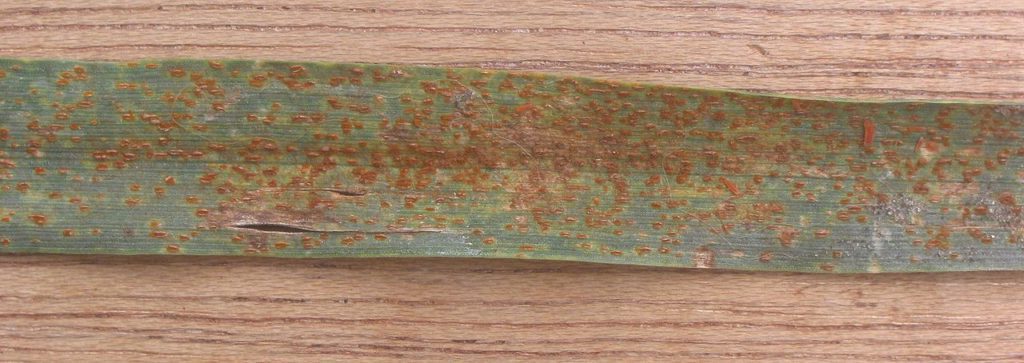
When it comes to lawn health, rust is a formidable adversary that can turn your lush green expanse into a dusty, orange-brown spectacle.
This disease, caused by fungi like Puccinia or Uromyces, initially presents as yellow dots on grass blades, maturing into pustules. Common in cool-season grasses, rust thrives in warm, humid conditions, exacerbated by inadequate fertilization and moisture stress.
Here’s what you can do:
- Ensure regular mowing to disrupt spore development.
- Fertilize adequately to strengthen grass resilience.
- Maintain proper moisture levels to alleviate stress.
- Clean mowing equipment to prevent spore spread.
Understanding these steps helps preserve lawn health.
Powdery Mildew & Pythium Blight
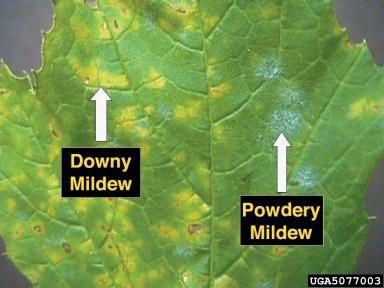
Powdery mildew and pythium blight are two prevalent grass fungi that demand immediate attention to preserve lawn health.
Powdery mildew, identified by a white or gray powdery coating on grass blades, prefers cool, humid conditions with poor air circulation.
Pythium blight, on the other hand, produces dark, greasy spots with a cottony mass, thriving in warm, wet environments.
Both are aggravated by high nitrogen levels and excess moisture.
Targeted management includes improving air circulation, ensuring proper drainage, and reducing nitrogen application.
Early identification and intervention are essential to preventing these fungi from causing significant lawn damage.
Lesser-Known Lawn Diseases and Conditions
You’ll encounter various lesser-known lawn diseases and conditions that can challenge your lawn care routine.
Yellow Spot, often linked to environmental stress, presents as chlorotic patches and requires you to optimize soil aeration and irrigation practices.
Meanwhile, addressing Slime Mold and Snow Mold involves improving drainage and reducing excessive moisture, while Leaf Spot and Necrotic Ring Spot demand targeted fungicide applications and balancing nitrogen levels to prevent reoccurrence.
Yellow Spot and Environmental Stress
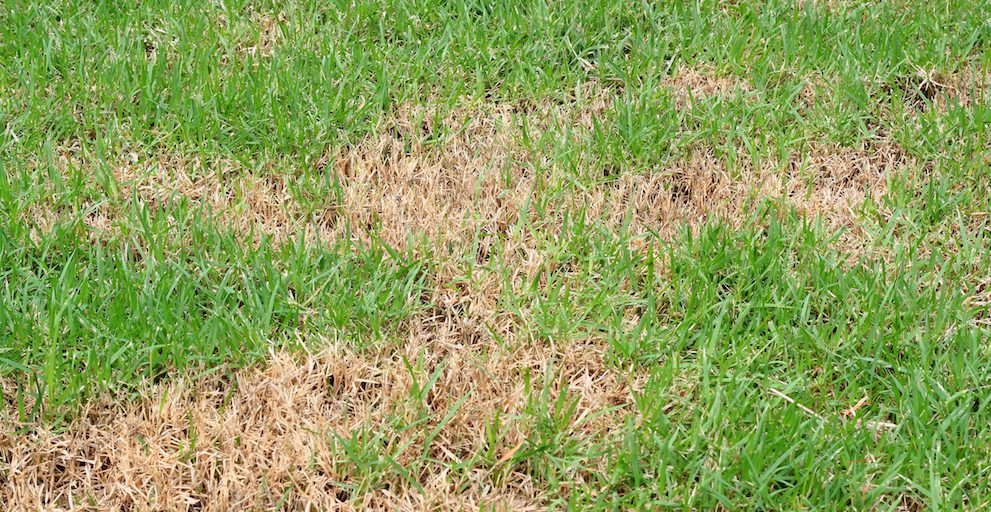
Yellow Spot, a lesser-known condition impacting lawns, is a significant concern for those maintaining annual bluegrass and low-mowed bermudagrass.
It’s not a fungal issue but a response to environmental stress.
To manage Yellow Spot effectively:
- Monitor Soil Moisture: Guarantee adequate irrigation, especially during hot, dry periods, to prevent drought stress.
- Balanced Fertilization: Apply a nitrogen-rich fertilizer to strengthen grass and reduce susceptibility.
- Identify Symptoms Early: Look for small yellow patches that can expand if untreated.
- Regular Maintenance: Mow at recommended heights and maintain consistent care routines to minimize stress factors.
Understanding these actions keeps your lawn vibrant.
Slime Mold and Snow Mold
Many lawn enthusiasts encounter lesser-known conditions like Slime Mold and Snow Mold, which can perplex even seasoned gardeners.
Slime mold appears as a colorful, slimy layer on grass blades due to high moisture. Though visually striking, it’s harmless to your turf.
Snow mold, including Gray and Pink types, forms under snow, leaving circular patches of affected grass post-thaw. Unlike slime mold, snow mold can damage your lawn, leading to thinning or dead patches.
To prevent these, reduce organic debris and guarantee good drainage. Maintaining proper lawn care will minimize high humidity environments, deterring slime mold and snow mold development.
Leaf Spot and Necrotic Ring Spot
While often overlooked, Leaf Spot and Necrotic Ring Spot are significant threats to your lawn’s health and aesthetics.
Both diseases thrive under specific conditions, demanding vigilant management. Here’s what you need to know:
- Identification: Leaf Spot manifests as brown or tan spots on cool-season grasses like Kentucky Bluegrass.
Necrotic Ring Spot appears as brownish-yellow rings, one foot in diameter.
- Conditions: Leaf Spot thrives in warm, humid summers, while Necrotic Ring Spot is intensified by spring and summer heat.
- Impact: Both cause grass thinning, exacerbated by poor watering and fertilization.
- Prevention: Guarantee proper lawn care, early disease identification, and appropriate treatment to mitigate damage.
Why Lawn Diseases Happen (And How to Stop Them)
When environmental conditions align just right, high humidity, poor drainage, and limited sunlight, lawn diseases often take root, creating a perfect storm for fungal pathogens to thrive. To combat these challenges, adopt balanced lawn care practices. Avoid overwatering and excessive nitrogen, which make grass lush but vulnerable to fungal diseases. Prioritize aeration to alleviate soil compaction and improve drainage.
| Condition | Effect | Solution |
|---|---|---|
| High Humidity | Fungal growth | Improve air circulation |
| Poor Drainage | Pathogen proliferation | Enhance drainage |
| Limited Sunlight | Increased disease susceptibility | Regular mowing |
Lawn Disease Control & Maintenance Tips
To effectively control lawn diseases, incorporate cultural practices such as proper mowing, dethatching, and aeration to enhance turf health and resilience.
Monitor environmental conditions closely and consider fungicide applications only when disease pressure is high, ensuring you follow label instructions for timing and dosage.
Cultural Practices for Healthy Turf
Achieving a healthy, disease-resistant lawn hinges on implementing effective cultural practices that enhance turf vigor and resilience.
Start with regular lawn maintenance to alleviate soil compaction and improve air and nutrient exchange. Here are key strategies:
- Aerate your lawn: Relieve soil compaction through aeration, enhancing root growth and nutrient uptake.
- Mow properly: Keep mowing height ideal to prevent stress and allow photosynthesis.
- Water wisely: Deep, infrequent watering fosters robust, drought-tolerant root systems.
- Balanced fertilization: Apply nutrients judiciously to support vigorous growth without encouraging disease.
Monitor environmental conditions, adjusting practices to sustain ideal turf health.
Fungicides: When and How to Use Them
Although fungicides play an essential role in lawn disease control, their effectiveness hinges on proper timing and application. Apply fungicides preventively, targeting early infection stages to thwart fungal growth. Identify the specific lawn disease to choose the right fungicide, as treatments vary. Apply during mild temperatures and moderate humidity for ideal results. Rotate fungicides with varying active ingredients to prevent fungal resistance. Follow label instructions precisely to avoid damaging your lawn or the environment.
| Disease | Symptoms | Recommended Fungicide |
|---|---|---|
| Anthracnose | Yellow-to-brown lesions | Azoxystrobin |
| Dollar Spot | Small, bleached patches | Propiconazole |
| Leaf Spot | Dark spots with tan centers | Chlorothalonil |
| Microdochium | Pinkish patches, usually in the winter | Iprodione |
| Necrotic Rings | Circular patches of dead grass | Thiophanate-methyl |
Need Help with Lawn Diseases or Fungus Types? LawnGuru Has You Covered
Are you struggling to identify and manage lawn diseases or fungal infections in your grass? LawnGuru’s expert assistance guarantees you can tackle grass fungus like Brown Patch and Dollar Spot effectively.
Understanding the symptoms, such as circular dead patches or yellowing spots, is essential for early intervention.
Here’s how LawnGuru can help:
- Expert Diagnosis: Quickly identify lawn diseases with professional insight.
- Customized Solutions: Tailor management strategies for specific grass fungus issues.
- Preventive Measures: Implement timely interventions to curb disease spread.
- Resilience Building: Enhance lawn health through regular care and monitoring.
Trust LawnGuru to maintain your lawn’s health and appearance.

